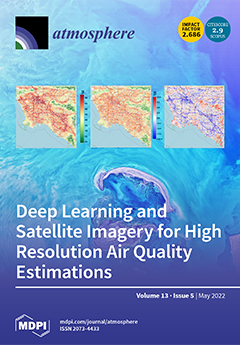The lockdown measures implemented due to the SARS-CoV-2 pandemic to reduce the epidemic curve, in most cases, have had a positive impact on air quality indices. Our study describes the changes in the concentration levels of PM
and PM
during the lockdown and post-lockdown in Victoria, Mexico, considering the following periods: before the lockdown (BL) from 16 February to 14 March, during the lockdown (DL) from 15 March to 2 May, and in the partial lockdown (PL) from 3 May to 6 June. When comparing the DL period of 2019 and 2020, we document a reduction in the average concentration of PM
and PM
of −55.56% and −55.17%, respectively. Moreover, we note a decrease of −53.57% for PM
and −51.61% for PM
in the PL period. When contrasting the average concentration between the DL periods of 2020 and 2021, an increase of 91.67% for PM
and 100.00% for PM
was identified. Furthermore, in the PL periods of 2020 and 2021, an increase of 38.46% and 31.33% was observed for PM
and PM
, respectively. On the other hand, when comparing the concentrations of PM
in the three periods of 2020, we found a decrease between BL and DL of −50.00%, between BL and PL a decrease of −45.83%, and an increase of 8.33% between DL and PL. In the case of PM
, a decrease of −48.00% between BL and DL, −40.00% between BL and PL, and an increase of 15.38% between the DL and PL periods were observed. In addition, we performed a non-parametric statistical analysis, where a significant statistical difference was found between the DL-2020 and DL-2019 pairs (
= 1.204) and between the DL-2021 and DL-2019 pairs (
= 0.372), with a
for PM
, and the contrast between pairs of PM
(DL) showed a significant difference between all pairs with
.
Full article





